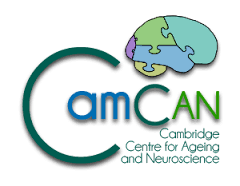CBSU bibliography search
To request a reprint of a CBSU publication, please
click here to send us an email (reprints may not be available for all publications)
Efficient and effective assessment of deficits and their neural bases in stroke aphasia
Authors:
HALAI, A.D., De Dios, P.B., Stefaniak, J.D., LAMBON RALPH, M.A.
Reference:
Cortex, 155: 333-346
Year of publication:
2022
CBU number:
8908
Abstract:
Objective
Multi-assessment batteries are necessary for diagnosing and quantifying the multifaceted deficits observed post-stroke. Extensive batteries are thorough but impractically long for clinical settings or large-scale research studies. Clinically-targeted "shallow" batteries superficially cover a wide range of language skills relatively quickly but can struggle to identify mild deficits or quantify the impairment level. Our aim was to compare these batteries across a large group of chronic stroke aphasia and to test a novel data-driven reduced version of an extensive battery that maintained sensitivity to mild impairment, ability to grade deficits and the underlying component structure.
Methods
We tested 75 chronic left-sided stroke participants, spanning global to mild aphasia. The underlying structure of these three batteries was analysed using cross-validation and principal component analysis, in addition to univariate and multivariate lesion-symptom mapping.
Results
This revealed a four-factor solution for the extensive and data-reduced batteries, identifying phonology, semantic skills, fluency and executive function in contrast to a two-factor solution using the shallow battery (language severity and cognitive severity). Lesion symptom mapping using participants' factor scores identified convergent neural structures for phonology (superior temporal gyrus), semantics (inferior temporal gyrus), speech fluency (precentral gyrus) and executive function (lateral occipitotemporal cortex). The two shallow battery components converged with the phonology and executive function clusters. In addition, we show that multivariate models could predict the component scores using neural data, however not for every component.
Conclusions
Overall, the data-driven battery appears to be an effective way to save time yet retain maintained sensitivity to mild impairment, ability to grade deficits and the underlying component structure observed in post-stroke aphasia.

 MRC Cognition and Brain Sciences Unit
MRC Cognition and Brain Sciences Unit

